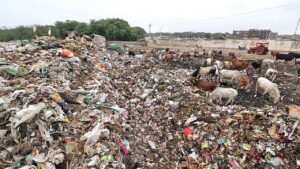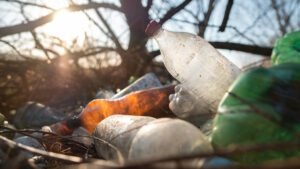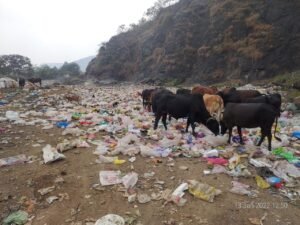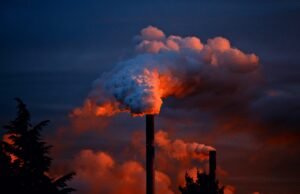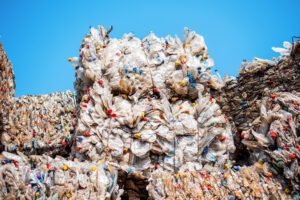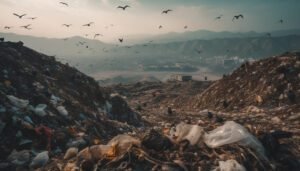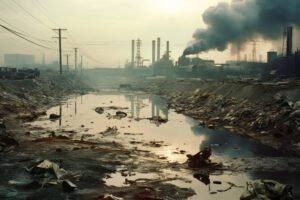Why GD Environmental’s Tri Fusion Dryer with Gasification & Pyrolysis Technology is the Need of the Hour
In the face of rapid urbanization, industrialization, and evolving lifestyles, the world is grappling with an unprecedented increase in solid waste generation. Traditional waste management systems are struggling to keep pace, leading to overflowing landfills, rising greenhouse gas emissions, and severe environmental degradation. GD Enivronmental’s Tri Fusion Dryer with Gasification & Pyrolysis Technology emerges as a revolutionary solution, offering a sustainable and efficient method to address these pressing challenges.
The Growing Waste Crisis
As cities expand, the concentration of populations in urban areas has skyrocketed. This urban sprawl has led to a surge in municipal solid waste (MSW), which includes everything from household trash to commercial and industrial waste. Urban centers, especially in developing countries, are ill-equipped to manage this growing volume, resulting in mounting waste piles and environmental hazards.
The industrial boom has led to an increase in the production of various goods, which in turn generates significant industrial waste. Much of this waste is hazardous and difficult to dispose of using conventional methods, contributing to pollution and environmental degradation.
The modern lifestyle, characterized by increased consumption, disposable products, and a throwaway culture, has significantly amplified the amount of waste generated per capita. Packaging waste, electronic waste, and food waste are among the most challenging types to manage, often ending up in landfills or incinerators.
The Need for Sustainable Waste Management
Given these challenges, there is an urgent need for a waste management solution that is not only efficient but also sustainable. The traditional methods of landfilling and incineration are becoming increasingly untenable due to their environmental impact, including methane emissions, leachate production, and the loss of potentially valuable resources.
Addressing Pollution Compliance Concerns
The waste undergoes Dehydration and Pyrolysis in a dedicated, separate tank, ensuring controlled processing and minimizing the release of pollutants.
The Gasifier utilizes Green Coal, Pyrolyzed, or Torrefied Pellets for heating, along with a mandatory 5% Refuse-Derived Fuel (RDF) as specified by the Urban Department. It also functions as a secondary thermal oxidizer, effectively treating any moisture and volatile organic compounds (VOCs) generated in the initial stage.
Any gas produced during the process is redirected for heating within the gasifier, ensuring efficient use of resources and minimizing Emissions.
The chimney height is maintained at a minimum of 10 meters, in accordance with regulatory standards. For coal-fired boilers with a capacity of less than 2 tons per hour, the standard height is adhered to, or 30 meters in the case of 100% dry municipal waste.
The plant is designed to operate without generating any liquid effluent, ensuring compliance with environmental regulations and reducing the risk of water pollution.
A heat exchanger is installed over the pyrolysis tank to capture and recycle waste heat, enhancing energy efficiency and reducing overall emissions.
An ash filter is implemented to capture and reduce the velocity of ash particles, minimizing their carryover in the exhaust and further lowering the potential for air pollution.
Input Material (Bulk Density Kg / Cubic Meter)
The process involves dehydrating the material in the pyrolysis tank, where volatile aromatic compounds are removed at temperatures up to 175°C, resulting in the formation of oil. The remaining material undergoes carbonization to form green coal. The yield of coal varies depending on the type of input waste:
| Plant Capacity | Wet Waste | Mixed Waste | Granulated Plastic | Waste Plastic / Garden Waste / Rice Straw |
|---|---|---|---|---|
| 1000 Liters / Kg Volume | 800 | 470 | 225 | 90 |
| End Product | ||||
| Oil | 35% to 75% Pyrolysis Oil Recovery depending on the type of Plastic. | |||
| Volatiles & Gas | 15% | 5% | 55% | |
| Water Mist | 70% | 60% | ||
| Green Coal | 15% | 35% | 45% | |
| Biochar |
**Warning:** The values and figures presented in the above chart are suggestive and may vary in the actual Tri Fusion Reactor (TFR) plant or unit. These estimates are based on representative data and should not be considered definitive. Actual results will depend on various factors, including the specific input material composition and operational conditions. Adjustments and variations in output should be expected.
Our process not only ensures efficient and environmentally responsible waste disposal but also enables significant value recovery from the waste, particularly in the form of green coal, which holds considerable market potential.
Advantages of Our Tri Fusion Reactor System
The system allows for decentralized installation, enabling waste processing facilities to be set up closer to the source of waste generation. This minimizes the need for large, centralized processing plants and reduces the logistical challenges and costs associated with transporting waste over long distances.
The technology is designed to be user-friendly, requiring minimal technical expertise for operation. Additionally, the equipment has a low machine footprint, meaning it occupies less space, making it suitable for various locations, including urban settings with space constraints.
The process is capable of handling all types of combustible waste, including those with low calorific value such as wet, dry, and mixed waste. This versatility ensures that a wide range of waste materials can be processed, maximizing the efficiency of waste-to-energy conversion.
The technology has undergone rigorous testing, including a one-year field trial observed by the Office of the Principal Scientific Advisor to the Government of India. This validation ensures the reliability and effectiveness of the process in real-world conditions.
The system operates on a partial oxygen principle, which ensures that no toxic gases are generated during the process. This makes the technology environmentally friendly and compliant with stringent air quality standards.
The energy generated from the process can be stored in various forms, such as gas or coal, for future use. This flexibility in energy storage allows for continuous energy supply even when the waste input is not consistent.
The system is equipped with an online pollution monitoring system that measures key parameters such as sulfur oxides (SOx), nitrogen oxides (NOx), carbon monoxide (CO), and carbon dioxide (CO2), along with combustion efficiency. The monitoring data is transmitted via a GPRS connection to a central data storage facility, ensuring real-time tracking and compliance with environmental regulations.
This comprehensive approach ensures that the process is not only effective in waste management but also aligns with environmental sustainability goals by minimizing harmful emissions and promoting energy recovery from waste.

